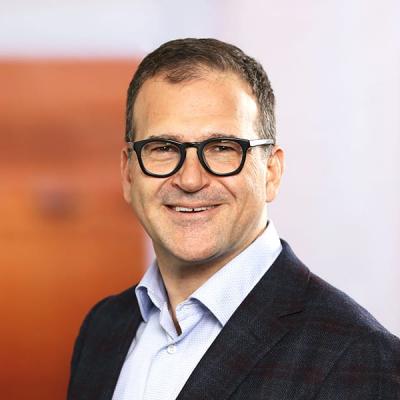2014 Cleantech and Renewables IPO Statistics
IPO recovery? Last year was the most active year for IPOs in the United States since 2000. That’s right: an astounding 275 IPOs were completed in 2014, topping the 2013 total of 222 by more than 23%.1 Total U.S. IPO proceeds also shattered 2013’s high-water mark of $55 billion (the highest since 2000’s $96.9 billion) with a whopping $85 billion in proceeds. These proceeds, including the highest quarterly total (Q3: $37 billion) since the fourth quarter of 1999 ($46 billion), were boosted by the record-setting $22 billion IPO from Chinese e-commerce giant Alibaba in September 2014.2 The year 2000 (over 400 IPOs) was the last year of a 10-year boom in U.S. IPOs that reached its peak in 1996 (over 700 IPOs).
What does this mean for emerging clean technology and renewable energy companies that might be looking to the capital markets? In 2014, there were nine cleantech/renewables IPOs, two more than in 2013. In both years, this level of activity has represented a relatively small percentage of total IPOs and still has not matched the activity in the more traditional energy and oil & gas sector. In 2014, IPOs were completed by a range of innovative companies, including Aspen Aerogels, TCP International, Opower, SunEdison Semiconductors, Vivint Solar, Sky Solar and others.
Energy industry companies, more broadly, successfully completed 30 U.S. IPOs in 2014 compared to 22 in 2013 and 25 in 2012. However, energy company IPO returns had, on average, returns of -7.5% in 2014, due in large part to the dramatic drop in oil prices late in the year. In general, cleantech and renewables seem to have dodged that bullet in 2014, as their average returns fared significantly better at 8.83%. Will this relative strength continue in 2015?
Two other positive developments for clean energy that manifested themselves in 2014 were the strong markets for follow-on offerings and YieldCo IPOs. As was the case in 2013, several public energy tech companies completed follow-on offerings to bolster cash for growth in 2014. Following in the footsteps of Tesla, SunEdison, First Solar, and other companies who did so 2013, more than 20 energy tech and renewables companies completed follow-ons in 2014, including Rubicon Technology (January and March 2014), Jinko Solar (January 2014), Pattern Energy (May 2014), Plug Power (January and April 2014), Trina Solar (June 2014), Enphase Energy (August 2014), ZBB Energy (August 2014), Terraform Power (November 2014), and many others. These offerings allowed already-public companies to take advantage of the continued receptiveness of cleantech capital markets.
Following on successful YieldCo IPOs in 2013 (NRG Yield, Pattern Energy), there were three large YieldCo IPOs in 2014: Abengoa Yield, NextEra Energy Partners, and Terraform Power. In late December 2014, Sol-Wind filed a registration statement with the SEC that, once cleared, would allow it to pursue a smaller ($100 million) YieldCo IPO, but as of January 26, the pricing terms were not yet on file. In addition, SunEdison is expected to seek an IPO for a YieldCo of solar assets in Asia and Africa in the near future.3 The continued growth of YieldCo deals as well as the growing dollar amount of such offerings is an extremely encouraging sign for the energy and cleantech sector as a whole, signaling a longer-term market acceptance of the ongoing changes in domestic and global energy consumption. The successful public market financings of these companies – whose strategy typically involves the purchase and operation of existing clean, energy-generating assets – should result in increased access to capital for renewable energy generation assets, as well as related technologies and services across the sector. Notably, several of these publicly traded YieldCos have completed follow-on offerings, including Pattern Energy and Terraform Power. Terraform, in fact, has already announced completion of a second large follow-on offering in January 2015.
Though 2014 will undoubtedly be remembered as a strong year for IPO activity across the U.S., the recent robustness of American capital markets has only started to trickle down into the world of cleantech and renewable energy IPOs. While already public cleantech companies and YieldCos continue to have very strong access to the capital markets, it remains to be seen whether the trickle to the IPO market for this industry will swell to anything of more substance in 2015 and 2016. The IPOs, follow-on offerings, and YieldCo successes that we saw in 2014 are positive signs in that direction. Despite the drop in oil prices, if global market speedbumps don’t derail U.S. capital markets, these trends should improve the prospects for forthcoming clean-energy IPOs, and I expect that renewable/clean energy companies will be better positioned to take advantage of the market’s continued public-offering receptiveness in 2015 and beyond.
![]()
1 Please note that there will be some variance in the statistics for IPOs generally. This is because most data sets exclude extremely small initial public offerings and uniquely structured offerings that don’t match up with the more commonly understood public offering for operating companies. The data in this post is based on information from http://bear.warrington.ufl.edu/ritter/IPOs2012Statistics.pdf and Renaissance Capital www.renaissancecapital.com.
2 “3Q 2014 IPO Market All About BABA and Biotechs,” via www.renaissancecapital.com.
3 Ibid.

